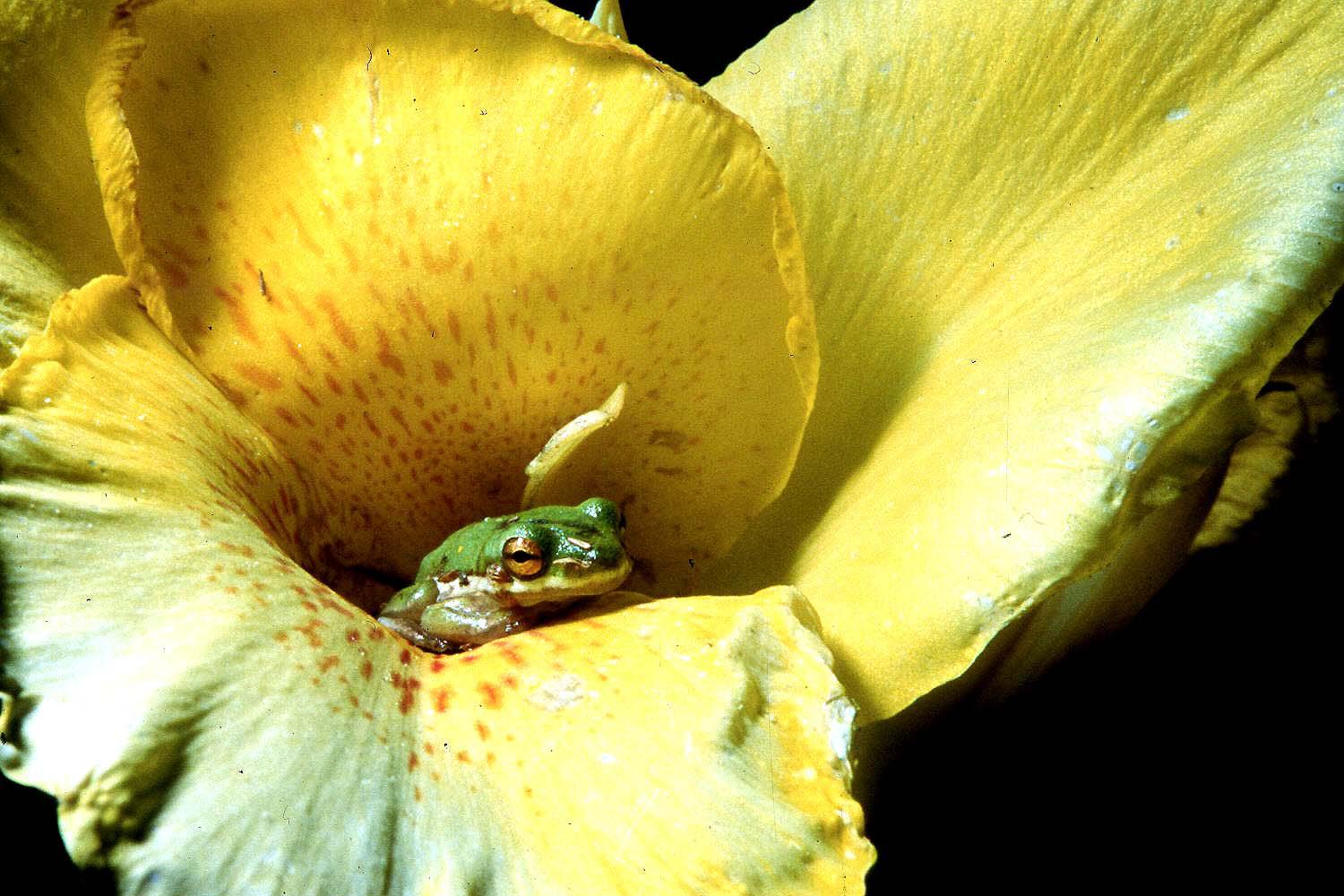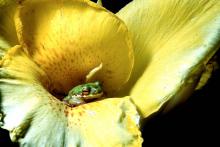Information Possibly Outdated
The information presented on this page was originally released on July 23, 2001. It may not be outdated, but please search our site for more current information. If you plan to quote or reference this information in a publication, please check with the Extension specialist or author before proceeding.
Tree frogs' melody is made in heaven
By Norman Winter
MSU Horticulturist
Central Mississippi Research & Extension Center
If I were to list the things I love about Mississippi such as spring, fall, the people and my church, it would take up the whole column. But if you step outside this evening and listen, you will hear one of the most wonderful songs in nature, a nighttime melody coming from the green tree frogs. This is on my list of the things I love about Mississippi.
I am not a native Mississippian. My early ancestors arrived in the Carolinas in the 1700s and ended up in west Texas with a long, intermediate stop near Tuscaloosa. Having grown up in west Texas, I never heard the mating song of the green tree frogs.
While the rainforest has the colorful poison dart frogs -- which I suppose we are blessed to not have -- we can boast a handsome, bright green tree frog, Hyla cinera. Do we proudly boast? Every time I mention them in garden groups, some people, mostly ladies, get squeamish.
These frogs are semi-tropical and native to Florida and much of the Southeast. Some are bright green and others are olive green with markings of white or yellow. Their legs are one and a half times the length of their bodies, giving them the ability to leap eight to 10 feet.
Their feet are unique, with rounded, adhesive disks on unwebbed toes that enable the frogs to climb. I get a kick out of watching them cling to windows and doors by the front porch lights, waiting for a tasty dinner to fly by.
During the day, the green tree frog goes into protection mode, remaining still and hidden so not to be seen by predators or tortured by the family feline. You will find them nestled in the cup of a bromeliad, snuggled down in the leaf of a canna or maybe hidden among the fronds of a Boston fern.
Their concert begins each evening after sunset. The males sing choruses, hoping to attract the young ladies. Sitting on the porch or patio listening to them sing and watching the passing fireflies also doing a mating ritual has to be one of the South's finest moments. It is the stuff that makes childhood memories and provides the lore for books about the South.
After mating, the females propel their eggs backward into ponds or streams where the eggs adhere to floating vegetation. Within a couple of days, the eggs hatch into a larval stage known as tadpoles or as kids call them, pollywogs.
This phase last from four to six weeks, then individuals mature into tree frogs. It will be the next year, however, before they reach sexual maturity and bring us their song again. The sounds go silent in August as mating season ends and the frogs prepare to over-winter, but with out a doubt, they do their part to make our landscapes more enjoyable at night.
While there is still time this season, take your children out for the evening. Don't go to a fast food establishment, but go out in the backyard or to a park to look, listen and remember. The green tree frogs will do their part.








